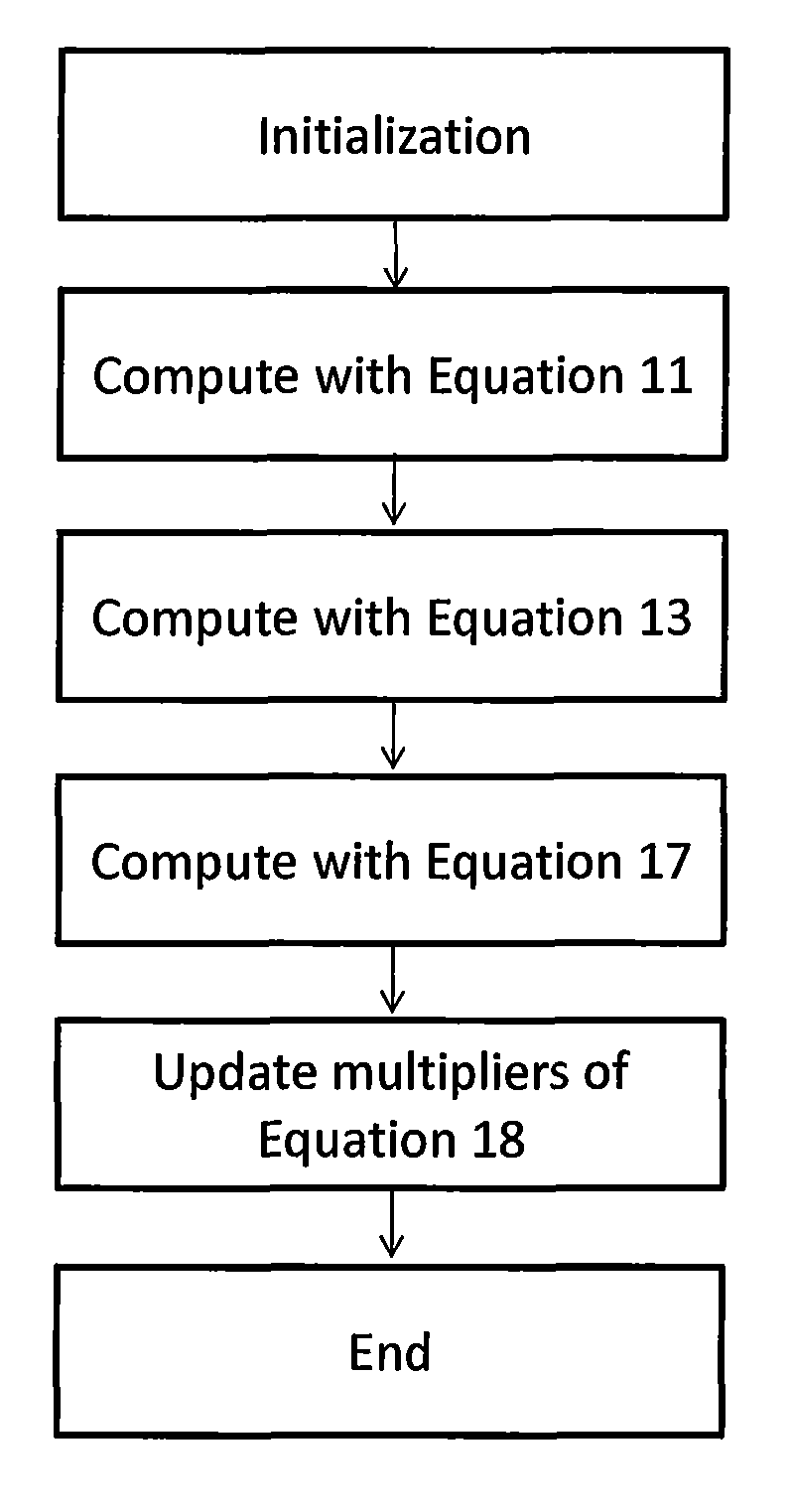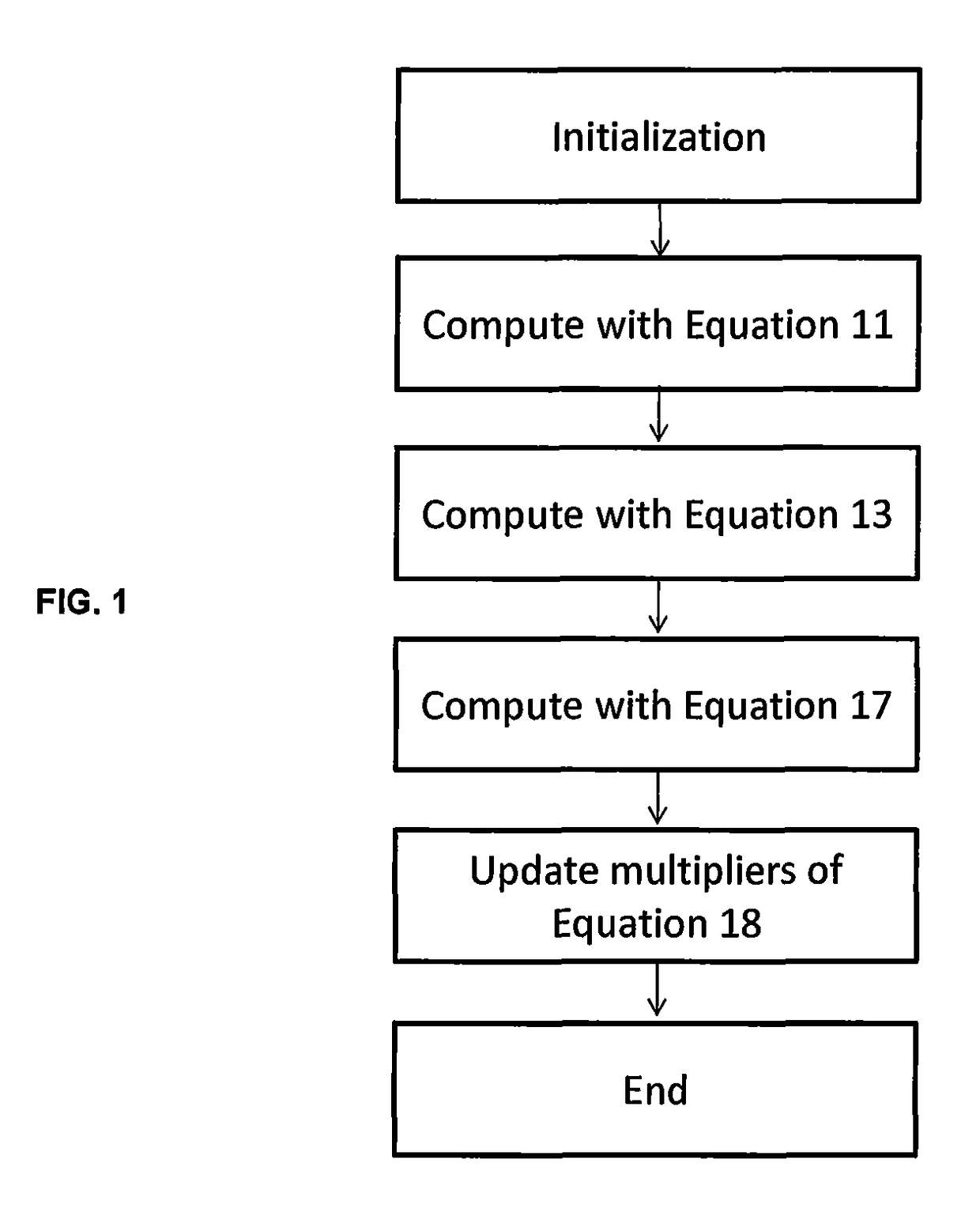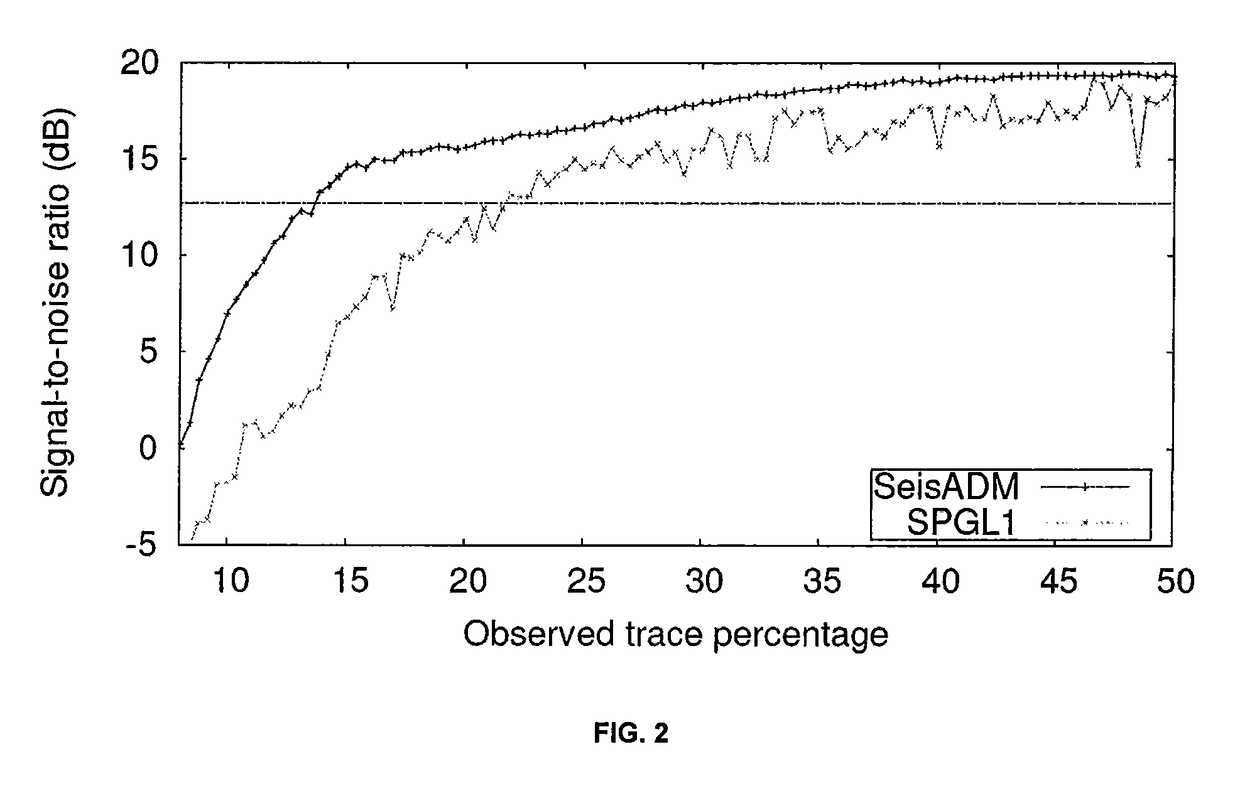Compressive sensing
a compression sensing and sensing technology, applied in the field of seismic imaging, can solve the problems of difficult design of optimal nominal grids and acquisition data containing positioning errors, and achieve the effects of reducing acquisition costs, efficient and robust algorithms, and less computation tim
- Summary
- Abstract
- Description
- Claims
- Application Information
AI Technical Summary
Benefits of technology
Problems solved by technology
Method used
Image
Examples
example 1
Data Reconstruction Model
[0035]For data reconstruction, a system is defined, wherein (Herrmann, 2010),
b=RS*x, x=Su, (1)
where b is observed seismic data, and u is reconstructed seismic data. Matrix R is a restriction (i.e. sampling) operator, mapping from the reconstructed seismic data to the observed seismic data. If S is an appropriately chosen dictionary, then x is a sparse representation of u. For most over-complete dictionaries, such as a wavelet, curvelet and windowed Fourier transforms,
S*S=I (2)
Optimization Models
[0036]Given the over-complete linear system in equation 1, and observed data b, solution(s) to the reconstructed data u are computed. A frequently used approach from compressive sensing is to solve either basis pursuit (BP) optimization model for noise-free observed data,
minx∥x∥1 s.t. RS*x=b (3)
or the basis pursuit de-noising (BPDN) optimization model for noisy or imperfect observed data,
minx∥x∥1 s.t. ∥RS*x−b∥22≦σ (4)
where σ is a representative of the noise level ...
example 2
[0062]First, the grids used in this Example are defined: 1) the observed grid is an irregular grid on which seismic data are acquired (i.e. observed trace locations), 2) the nominal grid is a regular grid on which seismic data are reconstructed, and 3) the initial grid is a regular grid from which the observed grid is selected using, for example, a jittered sampling scheme.
[0063]Traditionally, it is assumed that the initial grid is identical to the nominal grid, and the observed grid lies on a random or jittered subset of the nominal grid. Under these settings, the model from Herrmann and Hennenfent (2008) may be utilized,
b=Ru, x=Su (18)
where b=[b1, . . . , bm]T are observed or acquired seismic data, and u=[u1, . . . , un]T (m ni and ui represents a seismic trace. The operator S is an appropriately chosen dictionary which makes Su sparse or approximately sparse, and R is a restriction / sampling operator which maps data from the nominal grid to the observed grid. Specifically, R is c...
example 3
[0084]This example finds the optimal sampling grid in a seismic data reconstruction problem. The seismic data reconstruction model can be described as (e.g. Herrmann, 2010),
b=Dx, D=RS*, x=Su (29)
where b are seismic data on the observed grid, and u are data on the reconstruction grid (i.e. the true data). The matrix R is a restriction (i.e. sampling) operator, and maps data from the reconstruction grid to the observed grid. If S is a suitably chosen, possibly over-complete, dictionary, then x will have small cardinality (i.e. l0-norm).
Compressive Sensing Optimization Model and Mutual Coherence
[0085]Given the under-determined system in equation 29 and the data b, the reconstructed seismic data u is found by solving an analysis-based basis pursuit denoising optimization model (e.g. Cand'es et al., 2008),
minu∥Su∥1 s.t. ∥Ru−b∥2≦σ (30)
[0086]There are many algorithms that can be employed to find the solution of the optimization model in equation 30. In this Example, a variant (Li et al.,...
PUM
 Login to View More
Login to View More Abstract
Description
Claims
Application Information
 Login to View More
Login to View More - R&D
- Intellectual Property
- Life Sciences
- Materials
- Tech Scout
- Unparalleled Data Quality
- Higher Quality Content
- 60% Fewer Hallucinations
Browse by: Latest US Patents, China's latest patents, Technical Efficacy Thesaurus, Application Domain, Technology Topic, Popular Technical Reports.
© 2025 PatSnap. All rights reserved.Legal|Privacy policy|Modern Slavery Act Transparency Statement|Sitemap|About US| Contact US: help@patsnap.com



